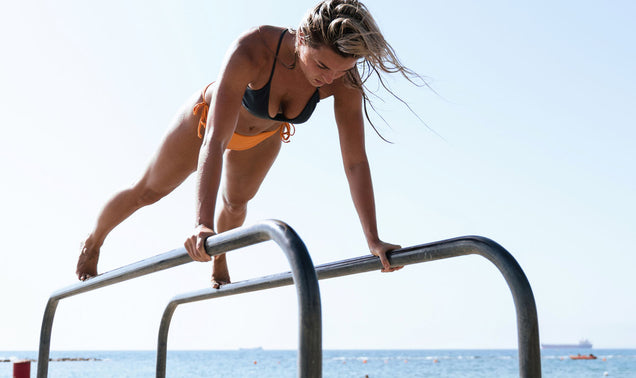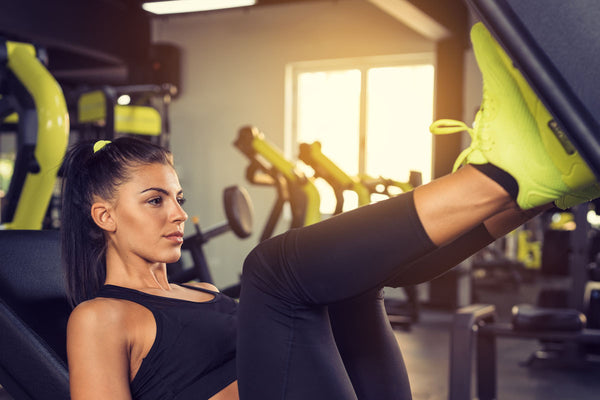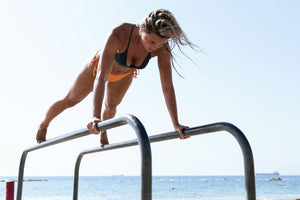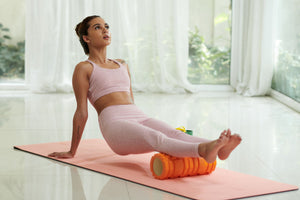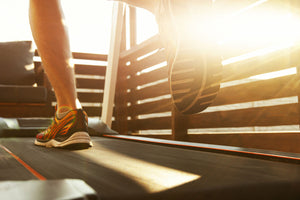There are dozens of ways to build bigger, stronger legs, but few can match the power, potency, and effectiveness of the leg press.
It can be trained multiple ways -- bilateral, unilateral, heavier, lighter, etc. Plus, the leg press allows you to focus 100% on strengthening all aspects of the lower body (yep, even those stubborn calves) without worrying about another muscle group being the limiting factor (e.g. the lower back, traps, grip, etc.). To top it off, the leg press allows for tremendous overload without the wear and tear on your lower back that other lifts, such as the back squat and deadlift, can impose.
Now, don’t take this to mean that we’re against compound barbell exercises (quite the opposite, in fact). It’s just that when it comes to choosing an exercise for the lower body that provides effective training for both new and experienced lifters across a wide range of strength, performance, physical function, and training goals, the leg press rises above all.
Here’s how to use the leg press to maximize your results:
Leg Press Foot Placement Variation
#1 Standard Foot Placement
The “standard” foot placement on the leg press is slightly outside of hip-width (aka your typical squat stance). This provides a great “catch-all” that hits both the quads and hamstrings, and it serves as the go-to option for casual fitness enthusiasts looking to improve lower body strength and muscle tone.
#2 High Foot Placement
Placing your feet higher on the platform places greater emphasis on the hamstrings and glutes, making it ideal for individuals wanting to improve the backside of the legs. As with your normal squat stance, your toes can be pointed straight ahead or slightly pointed out (depending on what feels best for you). For an extra bit of inner thigh, hamstring, and glute emphasis, use a slightly wider than normal stance (along with a high foot placement).
#3 Low Foot Placement
Placing your feet lower on the platform increases knee range of motion, which emphasizes the quadriceps. An added bonus of the low foot placement on the leg press is that it stretches your calves more, which imparts more tension (and strength gains) on them, making it a great 2-for-1 exercise, especially for those that struggle to grow calves.
One thing to keep in mind is that the increased range of motion at the knee joint may be uncomfortable for certain individuals with a previous history of knee injuries. As such, if the low foot placement feels uncomfortable, use whatever foot placement feels best for your body and biomechanics.
#4 Narrow Foot Placement
A narrow foot placement on the leg press occurs when your feet are positioned inside of hip-width (i.e. feet closer than your normal back squat stance). This places greater emphasis on your quads, and more specifically your VMO (vastus medialis - the “teardrop” muscle on your quads that plays a huge role in the long term health and performance of the knee joint).
Be aware that for the narrow foot placement, you don’t need to have your feet actually touching, but they should be pretty close together.
#5 Wide Foot Placement
A wide foot placement (wider than your standard squat stance) places greater emphasis on the inner thighs, hamstrings and glutes, but don’t worry, your quads will still receive plenty of tension on every rep.
#6 Toe Only Placement
The calves are one of the most stubborn muscle groups on the body, so much so that many individuals avoid training them to avoid frustration. Truthfully, though, trained in the right way, even the most non-genetically gifted lifters can see improvements in size and strength.
The leg press makes it incredibly easy (and effective) to train your calves with intensity. Using either your standard or narrow feet placement, lower your on the platform until only the balls of your feet are on the platform. Now, you can start repping out calf raises.
How to Maximize Your Results on the Leg Press
As with every exercise, the key to getting results from the leg press is to use terrific form. Don’t bounce out of the bottom or use momentum. Perform smooth, controlled reps with a full range of motion.
We’re all built differently, so experiment with different feet placement to find the one that works best for you and allows you to train hard and safely. It also helps to track your workouts, so you know what you need to do on the next workout to continue getting results.
The 1UP Fitness App makes it easier than ever to log your workouts. Plus, if you’re ever not sure what to do, or feel like mixing things up, the app also provides customized training programs tailored to your needs and preferences.

